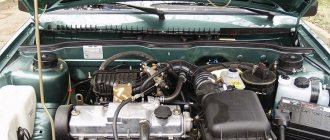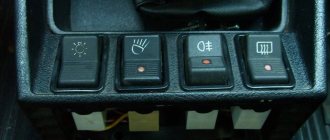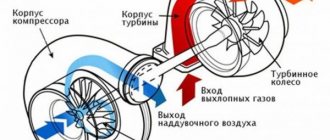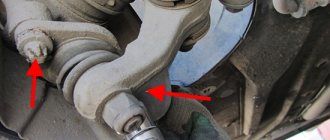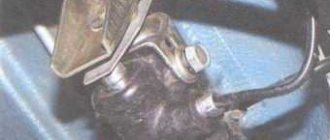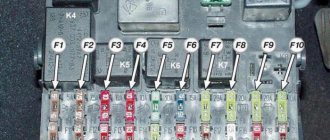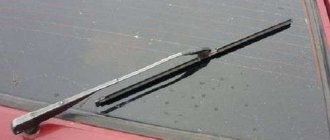Today, the spring suspension system is practically not used in passenger cars. It can only be found on rare old models. But just a few decades ago, chassis with leaf springs were extremely popular among automakers. Today this element is used only in trucks and for the construction of trailers. Let's find out what springs are.
In fact, suspension with springs is one of the options for the chassis of cars. It is distinguished by sheet-type elements as elastic parts. The history of springs dates back to ancient times, when simple carts were just beginning to be created, but then chains or leather belts were used instead of traditional leaves.
Device
Almost all experienced motorists know what a spring is. But beginners often have no idea what springs are.
The element is made of special steel alloys. Each one has a different length. It depends on what characteristics the spring should have. The thickness of the sheets is also different. Typically, the first sheet that is in direct contact with the body elements should be thicker than all the others. The entire assembly is fixed with clamps. On passenger models, the car spring is attached under the axles. In trucks, this suspension element is fixed above the axle.
Each of the sheets is specially processed during assembly in production. This allows you to significantly increase the service life of the part. The spring assemblies are secured with a special clamp, which must then be tightened with bolts. But there should be no holes on the surface of the sheets. This will reduce the product's durability and stability.
The ends of the sheets are connected to the car body using hinge joints. A spring is needed to transfer loads to the chassis from the truck frame or body. We can also distinguish such structures where the elements work in bending, like elastic beams. Typically, such products contain several sheets, but now monosheet solutions are also used in the construction of trucks. In such suspensions, the main role is still played by shock absorbers.
As for the number of springs, it depends on the car model, its type, weight, load capacity and other characteristics.
Spring arrangement
Most often in the automotive industry, springs are installed on trucks. In this case, the front and rear structures are distinguished.
The front ones are mainly designed to ensure a comfortable ride in the cabin. The rear ones usually have a different purpose - to carry most of the load; for this purpose, this type of automotive unit is reinforced.
This reinforcement is usually achieved by adding more sheets. The lower part of the structure is subjected to the highest load, as a result of which 2-3 special main springs are installed there. Although this solution helps reduce ride comfort, it significantly increases the stiffness of the suspension.
Kinds
When we know what springs are on a car, we can move on to studying their types and features.
Depending on how the sheet will be used, one of the types is used only on trucks, the main function of which is to transport enormous loads. In this case, the spring must ensure smooth running of the machine. The first type is heavy trucks for transporting metal products, sand, crushed stone, and various building materials. The second type is springs for cars, SUVs, and buses.
Maximum suspension efficiency can only be achieved when the machine is loaded. In all other cases, achieving the required level of comfort will be very difficult.
You can also select semi-elliptical or torsion elements. And although such suspensions are much better in terms of performance compared to leaf-type springs, they require special maintenance and attention.
Application
Most often, dependent suspension is installed on cars that require a strong and reliable chassis. A metal axle is almost always used as a rear suspension, and the front suspension beam is no longer actually used. SUVs (Mercedes Benz G-Class, Land Rover Defender, Jeep Wrangler and others), commercial vehicles, and light trucks have a dependent chassis. Often a rigid beam is used as the rear suspension of budget passenger cars.
- Features of car interior heaters from the cigarette lighter
- What is it? Types of car suspensions; design features and main malfunctions
- Car suspension shock absorbers.
- How to choose the right capacitor for a subwoofer
Advantages
Now that we know what springs are in a car, we can talk about their pros and cons. The first and most important advantage is the maximum simplicity of the design. This determines the low cost, as well as high reliability. If a spring is used in the suspension, then there will be no need to assemble the system with bushings, reaction bars and levers. In addition, the spring tolerates loads and overloads much better when driving off-road and on broken roads.
One more plus can be highlighted - it is versatility. Such a suspension can easily absorb not only vertical loads, but also longitudinal ones. They often occur when braking or accelerating. The spring also smoothes out the lateral loads that occur when cornering.
What are springs? This is a suspension element, which means it should have characteristics such as compactness. The spring is very compact, unlike springs traditional for passenger car suspensions. The element is installed at the bottom, which frees the structure from reducing the loading area of the trunk. This is very important for utility vehicles. In addition, due to the length of the springs, they can be made very comfortable and soft.
Dependent suspension with guide arms
There is no chance of losing control of the axle in the case of a suspension with guide arms. This is the most common type of dependent suspension. There are a total of 5 levers in this suspension: four longitudinal and one transverse.
Thanks to the presence of levers, excellent endurance is ensured for the following types of forces:
- Vertical;
- Longitudinal;
- Lateral;
In order to give elasticity to the suspension, a spring is used, and a shock absorber is used to absorb shocks.
The presence of a wishbone prevents the car's axle from moving. The lever itself is called a Panhard rod. This type of traction can work differently when turning left or right. More successful mechanisms for the dependent suspension of a car are the Scott-Russell and Watt mechanisms. Below are descriptions of several types of dependent suspension.
Watt's pendant
The Watt mechanism consists of two horizontal arms that are hinged in a vertical position. The lever itself is fixed in the center of the beam and can rotate. When the moment of uneven movement occurs, for example when turning, the vertical lever rotates and compensates for everything.
Scott-Russell suspension
The Scott-Russell mechanism consists of two levers: short and long. The long lever is attached to the body, and the short one is attached to the center and edge of the bridge. The main feature of this mechanism is the elastic fastening to the beam, thanks to which the car better maintains its course and is better controlled.
De Dion pendant
Also an excellent type of dependent suspension is the De Dion suspension. It was developed by the De Dion Bouton company in 1896. It is a structure where the body is separated from the axis. Thanks to this moment, the mass of non-shock-absorbing parts is reduced. Most often, this type of suspension was used in Alfa Romeo cars. Of course, it was only installed backwards.
The De Dion suspension is considered average between dependent and independent suspensions. All parts of this suspension contribute to a lightweight ride and high handling. Due to the fact that De Dion is quite expensive to buy, it is used very rarely, and only on sports cars.
Dependent suspension is very old and its history dates back to carts and carts. Despite this, it can still be found on some cars.
The main advantages of dependent suspension:
- Large stroke, thanks to which you can overcome large obstacles;
- Simple design;
- Excellent stability and strength;
- Constant track width, which is an excellent factor for off-road use;
The main disadvantage is the rigid connection of the wheels, which is why they move along a very similar course, even when passing obstacles. Together with the large weight of the structure, this moment cannot have a positive effect on motion stability and controllability.
Below you can watch a video of how a car's dependent suspension works.
Why are there no spring suspensions on passenger cars?
We continue to study what springs are on a car (there is a photo of the design in our article). These elements are designed to withstand heavy loads in terms of carrying capacity and more - there are simply no such loads on passenger cars. But there is one more small feature - the comfort of the springs is much higher. Passengers and the driver will not jump on their seats when the car passes a speed bump or a pothole.
The leaf spring will make the suspension system very stiff, even stiffer than sport spring suspensions. Small bumps will be strongly felt. In addition, such a suspension does not provide very sharp handling, since its travel is still limited.
On passenger cars such a design is simply not needed. Springs need weight to work. You can find a similar design on Chinese passenger pickup trucks - but they are also designed to carry about a ton of cargo. If the body is empty, the car will lose control and the rear end will bounce along the road.
Design of hanging elements
Any suspension consists of three components:
- damping component;
- guide component;
- elastic component.
The damping component, as the name suggests, is needed to dampen various irregularities that occur along the vehicle’s path. Shock absorbers are most often used as this component.
The guiding component is represented by levers that serve to connect the chassis and body of the car.
It is generally accepted that there are two types of suspensions: mechanical and pneumatic. However, some suspension components also combine electrical and hydraulic components to help achieve a smoother ride on the road. Sometimes the electronic control unit is responsible for the operation of the suspension.
Service
While operating the car, the driver must know what springs are on a car. Therefore, you should definitely take into account the road surface and try not to overload the car. It is also better to change your driving style to a calmer one - you need to avoid sudden starts and sudden braking.
If the sheets in the spring break, they must be promptly replaced with new ones. You constantly need to monitor and listen to the operation of these parts. The assembly is treated with graphite lubricant - it needs to be updated periodically. The threaded connections of clamps sometimes need to be tightened.
The durability and quality of work of the described products also depends not only on the quality of the steel or the level of workmanship, but also on how well the springs are cared for. With an attentive driver and professional mechanics, this suspension will work for a long time and reliably.
